Basic Pool Safety Rules For Families
As summer approaches, many families look forward to spending time in their backyard pools. While pools provide endless fun and relaxation, they also come with significant risks if safety measures are not adhered to. For parents and homeowners, ensuring pool safety isn't just a good practice—it's a necessity. This blog post will guide you through the fundamental pool safety rules, helping you protect your loved ones and enjoy a worry-free summer.
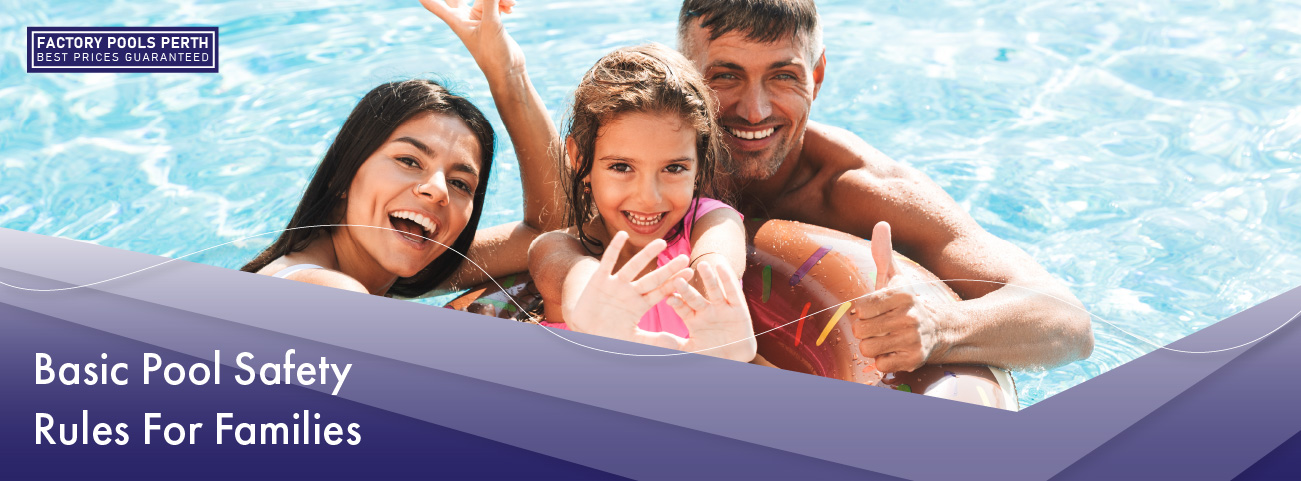
Understanding Pool Hazards
Common Risks Associated with Home Pools
Understanding the potential hazards around your pool is the first step in preventing accidents. Drowning is the most obvious risk, but slips, falls, and other injuries can also occur. The slick surfaces around a pool can lead to falls, and even shallow water can pose a drowning risk, especially for young children. It’s essential to recognize these dangers to mitigate them effectively.
Statistics on Pool Accidents and Their Impact
The statistics surrounding pool accidents are sobering. According to the Centers for Disease Control and Prevention (CDC), drowning is the leading cause of unintentional injury death among children aged 1-4 years. Each year, there are approximately 3,536 fatal unintentional drownings in the United States, equating to about ten deaths per day. These figures highlight the critical importance of implementing pool safety measures to protect your family.
Essential Pool Safety Rules
Always Supervise Children Around the Pool
One of the most fundamental rules of pool safety is constant supervision. Never leave children unattended near the pool, even for a moment. Assign a designated “water watcher” who stays vigilant and focused on the swimmers, without distractions such as mobile phones or books. Effective supervision can prevent many accidents and ensure immediate action if something goes wrong.
Implement Physical Barriers Like Fences and Covers
Physical barriers are vital in preventing unsupervised access to the pool. Installing a fence at least four feet high with a self-closing, self-latching gate can significantly reduce the risk of accidental drownings. Additionally, pool covers provide an extra layer of security, especially when the pool is not in use. Ensure that the cover is sturdy enough to support an adult’s weight if necessary.
Teach Children to Swim and Establish Clear Rules
Swimming lessons can equip children with essential life skills, reducing the risk of drowning. Enrol your children in swim classes suitable for their age and ability. Besides, establish and enforce clear pool rules, such as no running, no diving in shallow water, and no swimming alone. Consistent reinforcement of these rules can foster a culture of safety and responsibility.
Safety Equipment That Should Be Near the Pool
Having the right safety equipment readily available can make a significant difference in an emergency. Keep a life ring, a reaching pole, and a first aid kit near the pool area. These tools can assist in rescuing someone in trouble and providing immediate care until professional help arrives. Regularly check that all equipment is in good condition and easily accessible.
CPR Training for Adults and Caregivers
In an emergency, knowing CPR can save lives. All adults and caregivers should be trained in CPR and first aid. Many local community centres and organisations offer CPR training courses. Having these skills ensures that you can respond swiftly and effectively if an accident occurs, potentially making the difference between life and death.
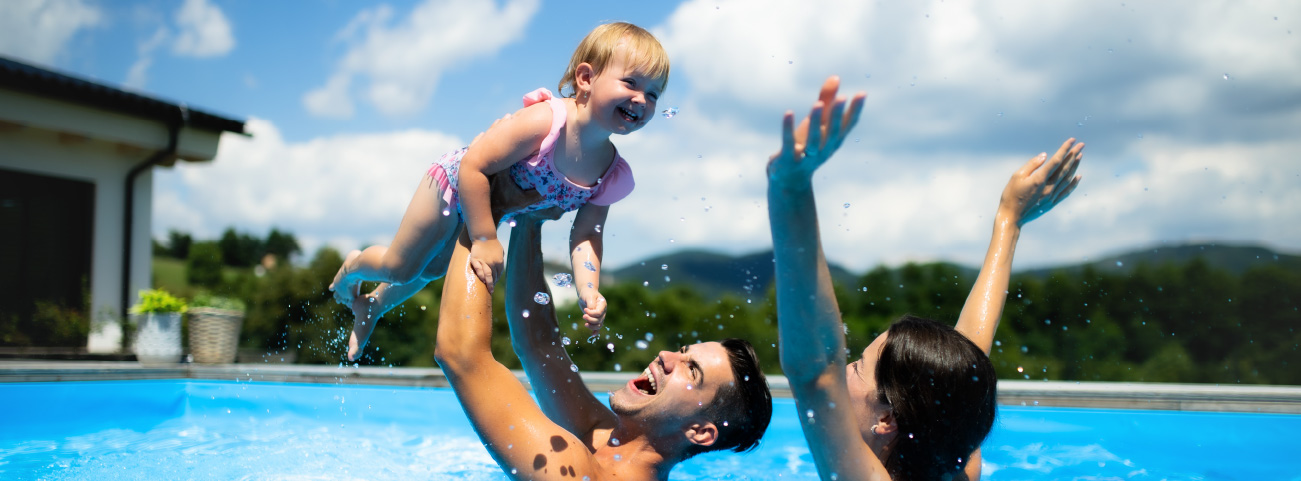
Creating a Family Pool Safety Plan
Developing a Comprehensive Plan for All Family Members
A family pool safety plan ensures that everyone knows what to do in an emergency. Involve all family members in creating the plan, discussing different scenarios, and deciding on actions. Practice these plans regularly to ensure familiarity and readiness among all family members. A well-prepared family is a safe family.
Setting Up Emergency Procedures and Contacts
Emergency procedures should be clear and straightforward. Make sure everyone knows how to call emergency services and provide your address accurately. Keep emergency contact numbers, including those of neighbours and nearby relatives, easily accessible. Clearly post these numbers in a visible area near the pool for quick reference.
Pool Maintenance for Safety
Importance of Regular Maintenance for Safety
Regular maintenance is crucial for preventing accidents and ensuring a safe swimming environment. Poor maintenance can lead to water contamination, broken equipment, and other hazards. A clean, well-maintained pool not only looks inviting but also reduces the risk of injury and illness.
Checklist for Ensuring the Pool is Safe and Secure
Create a maintenance checklist to ensure your pool remains safe and secure. Include tasks such as checking the chemical levels, inspecting the pool’s structure for cracks or damage, ensuring that drains and filters are functioning correctly, and cleaning the pool area to remove any debris. Regularly maintaining your pool keeps it in optimal condition and minimises risks.
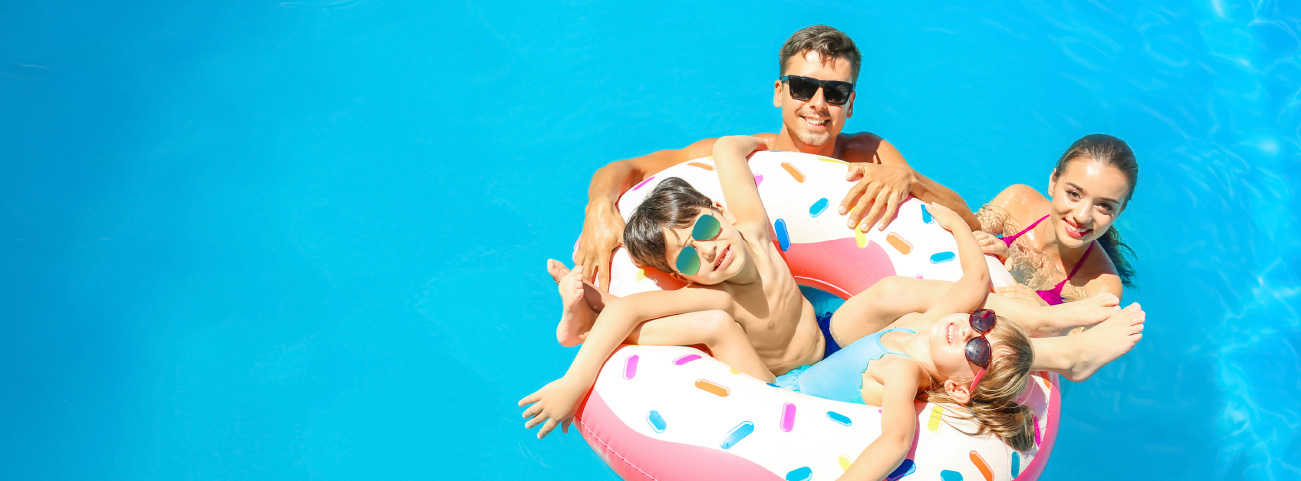
Legal and Insurance Considerations
Understanding Local Pool Safety Regulations
Many areas have specific regulations regarding pool safety, such as fencing requirements and safety equipment standards. Familiarise yourself with these regulations to ensure compliance and avoid potential legal issues. Adhering to local regulations is not only a legal obligation but also a critical aspect of overall pool safety.
Reviewing Homeowner's Insurance for Pool Coverage
Reviewing your homeowner’s insurance policy can provide peace of mind. Ensure that your pool is adequately covered and understand the terms and conditions, including any safety requirements stipulated by the insurer. Adequate insurance coverage can protect you from liability in case of accidents and provide financial support for necessary repairs and medical expenses.
Conclusion
Pool safety is paramount for families looking to enjoy their backyard oasis. By understanding the hazards, implementing essential safety rules, and maintaining a proactive approach, you can create a safe, enjoyable environment for all. Remember, constant supervision, proper barriers, swimming lessons, availability of safety equipment, and CPR training are key elements in safeguarding your loved ones. Developing a comprehensive family pool safety plan and staying informed about local regulations and insurance considerations further enhance your preparedness. Prioritising pool safety ensures that your pool remains a source of joy and relaxation, not a potential danger. Let’s collectively make pool safety a top priority, creating a safer and more enjoyable experience for everyone.
Basic Pool Safety Rules For Families
As summer approaches, many families look forward to spending time in their backyard pools. While pools provide endless fun and relaxation, they also come with significant risks if safety measures are not adhered to. For parents and homeowners, ensuring pool safety isn't just a good practice—it's a necessity. This blog post will guide you through the fundamental pool safety rules, helping you protect your loved ones and enjoy a worry-free summer.
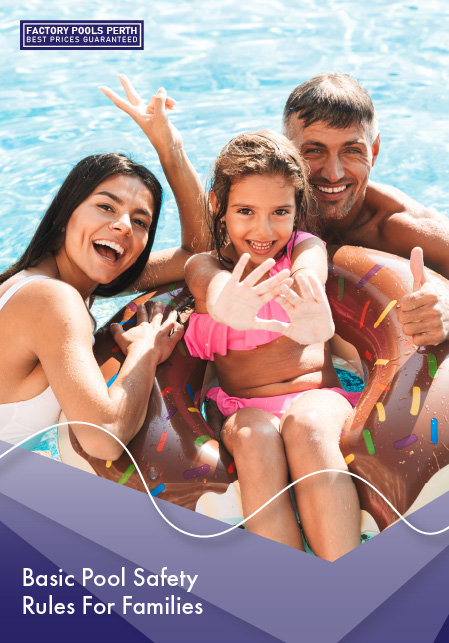
Understanding Pool Hazards
Common Risks Associated with Home Pools
Understanding the potential hazards around your pool is the first step in preventing accidents. Drowning is the most obvious risk, but slips, falls, and other injuries can also occur. The slick surfaces around a pool can lead to falls, and even shallow water can pose a drowning risk, especially for young children. It’s essential to recognize these dangers to mitigate them effectively.
Statistics on Pool Accidents and Their Impact
The statistics surrounding pool accidents are sobering. According to the Centers for Disease Control and Prevention (CDC), drowning is the leading cause of unintentional injury death among children aged 1-4 years. Each year, there are approximately 3,536 fatal unintentional drownings in the United States, equating to about ten deaths per day. These figures highlight the critical importance of implementing pool safety measures to protect your family.
Essential Pool Safety Rules
Always Supervise Children Around the Pool
One of the most fundamental rules of pool safety is constant supervision. Never leave children unattended near the pool, even for a moment. Assign a designated “water watcher” who stays vigilant and focused on the swimmers, without distractions such as mobile phones or books. Effective supervision can prevent many accidents and ensure immediate action if something goes wrong.
Implement Physical Barriers Like Fences and Covers
Physical barriers are vital in preventing unsupervised access to the pool. Installing a fence at least four feet high with a self-closing, self-latching gate can significantly reduce the risk of accidental drownings. Additionally, pool covers provide an extra layer of security, especially when the pool is not in use. Ensure that the cover is sturdy enough to support an adult’s weight if necessary.
Teach Children to Swim and Establish Clear Rules
Swimming lessons can equip children with essential life skills, reducing the risk of drowning. Enrol your children in swim classes suitable for their age and ability. Besides, establish and enforce clear pool rules, such as no running, no diving in shallow water, and no swimming alone. Consistent reinforcement of these rules can foster a culture of safety and responsibility.
Safety Equipment That Should Be Near the Pool
Having the right safety equipment readily available can make a significant difference in an emergency. Keep a life ring, a reaching pole, and a first aid kit near the pool area. These tools can assist in rescuing someone in trouble and providing immediate care until professional help arrives. Regularly check that all equipment is in good condition and easily accessible.
CPR Training for Adults and Caregivers
In an emergency, knowing CPR can save lives. All adults and caregivers should be trained in CPR and first aid. Many local community centres and organisations offer CPR training courses. Having these skills ensures that you can respond swiftly and effectively if an accident occurs, potentially making the difference between life and death.
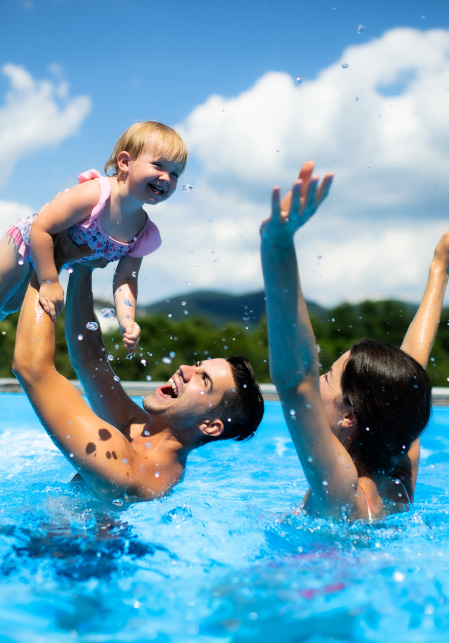
Creating a Family Pool Safety Plan
Developing a Comprehensive Plan for All Family Members
A family pool safety plan ensures that everyone knows what to do in an emergency. Involve all family members in creating the plan, discussing different scenarios, and deciding on actions. Practice these plans regularly to ensure familiarity and readiness among all family members. A well-prepared family is a safe family.
Setting Up Emergency Procedures and Contacts
Emergency procedures should be clear and straightforward. Make sure everyone knows how to call emergency services and provide your address accurately. Keep emergency contact numbers, including those of neighbours and nearby relatives, easily accessible. Clearly post these numbers in a visible area near the pool for quick reference.
Pool Maintenance for Safety
Importance of Regular Maintenance for Safety
Regular maintenance is crucial for preventing accidents and ensuring a safe swimming environment. Poor maintenance can lead to water contamination, broken equipment, and other hazards. A clean, well-maintained pool not only looks inviting but also reduces the risk of injury and illness.
Checklist for Ensuring the Pool is Safe and Secure
Create a maintenance checklist to ensure your pool remains safe and secure. Include tasks such as checking the chemical levels, inspecting the pool’s structure for cracks or damage, ensuring that drains and filters are functioning correctly, and cleaning the pool area to remove any debris. Regularly maintaining your pool keeps it in optimal condition and minimises risks.

Legal and Insurance Considerations
Understanding Local Pool Safety Regulations
Many areas have specific regulations regarding pool safety, such as fencing requirements and safety equipment standards. Familiarise yourself with these regulations to ensure compliance and avoid potential legal issues. Adhering to local regulations is not only a legal obligation but also a critical aspect of overall pool safety.
Reviewing Homeowner's Insurance for Pool Coverage
Reviewing your homeowner’s insurance policy can provide peace of mind. Ensure that your pool is adequately covered and understand the terms and conditions, including any safety requirements stipulated by the insurer. Adequate insurance coverage can protect you from liability in case of accidents and provide financial support for necessary repairs and medical expenses.
Conclusion
Pool safety is paramount for families looking to enjoy their backyard oasis. By understanding the hazards, implementing essential safety rules, and maintaining a proactive approach, you can create a safe, enjoyable environment for all. Remember, constant supervision, proper barriers, swimming lessons, availability of safety equipment, and CPR training are key elements in safeguarding your loved ones. Developing a comprehensive family pool safety plan and staying informed about local regulations and insurance considerations further enhance your preparedness. Prioritising pool safety ensures that your pool remains a source of joy and relaxation, not a potential danger. Let’s collectively make pool safety a top priority, creating a safer and more enjoyable experience for everyone.



